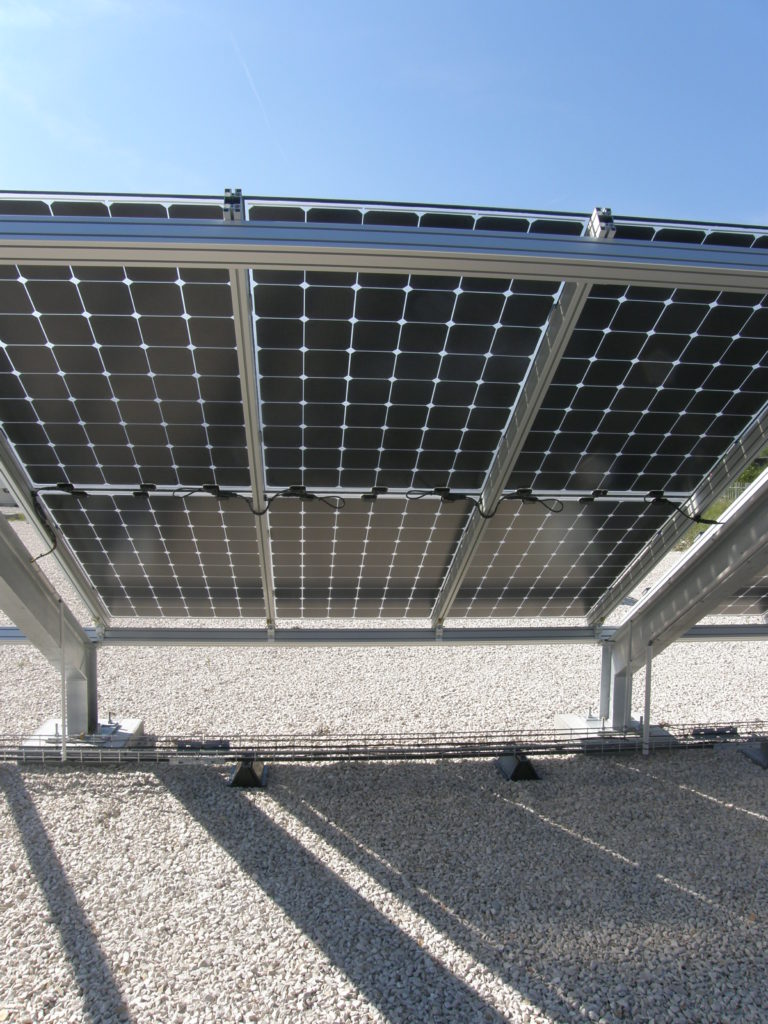Several project partners of SERENDI-PV aim to improve their energy simulation model for bifacial PV modules. Different modelling approaches are being developed and tested, including:
• Solar irradiance modelling on the back side of the PV modules using NREL’s Bifacial Radiance tool.
• Electrical simulation using LT SPICE software.
• Modelling of bifacial systems from a 2D View Factor model to a 3D approach. The 3D approach will also give the opportunity to estimate the mismatch caused by the inhomogeneity of the back irradiance.
• GPU-based simulation of 3D view factors.
• Bidirectional Reflectance Distribution Function (BRDF) albedo profiles.
• Spectral correction of the effective albedo for typical materials.
• Creation of hourly BRDF profile from MODIS database.
We will compare the model performance with other software packages and with data from PV systems with bifacial modules. The work on the improvement of the already existing models, as well as on the validation of the models, will be carried out vs real data.
WHAT WILL BE OFFERED?
Several tools are currently under development for the simulation and monitoring data analytics of bifacial PV systems. A beta version of these tools will be available from this collaborative platform.


How to collaborate?
-
-
- We are actively looking for the monitored operational data of bifacial PV systems of different typologies and installed all over the world, in order to further develop and validate our simulation models. We are also looking for reliable albedo data in order to perform these steps. If you possess such data, we will welcome collaboration. If your data are of interest for the research group involved in the bifacial PV modelling, you could receive in-depth analyses for free that will contribute to a better understanding of the performance of your bifacial PV assets.
- If you are currently modelling bifacial PV installations, and if you are interested in sharing good simulation practices, and/or simulation codes, we encourage you to use our collaborative tools for development and get involved in bifacial PV modelling with the rest of the team. Interesting comparisons between different approaches could teach important lessons. The results of these data analyses, as well as the input data, will not be publicly released in order to preserve the critical commercial character of most of such data that will be provided by their owners, and to prevent their competitors from gaining access to the knowledge of the actual performance of their PV plants
-


